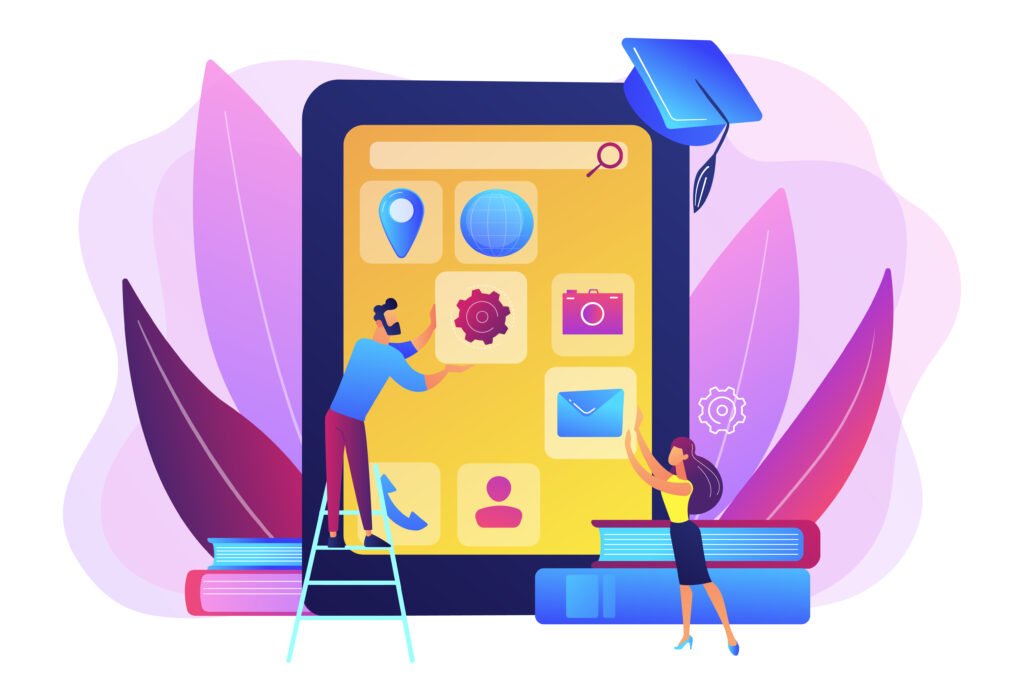LMS applications have gained popularity in both corporate environments, for their convenience in managing learning content. Whether you’re a teacher aiming to improve your classes or a business focused on employee training, it’s crucial to utilize your LMS app.
This article offers 12 tips to help you get the most out of your LMS app.
12 Tips for Maximizing the Use of Your LMS App

1. Establish Clear Learning Objectives
When using an LMS app, it’s essential to define learning objectives for each course or module. These objectives ensure that learners understand what they should achieve by the end of the course. Consider setting short-term goals achievable within a lesson or module along with long-term goals for the course.
2. Efficiently Organize Content
To optimize your LMS app usage, arrange your content in an easy to navigate manner. Utilize folders and subfolders to categorize content types, like readings, videos, quizzes, and assignments. Efficient organization enables learners to find and access the materials they require.
3. Make Use of Media
When developing courses, on your LMS app, don’t stick to text content. Incorporate multimedia elements like pictures, videos, audio clips, and interactive presentations to captivate learners. It helps enhance the appeal of your courses. Moreover, visual aids can reinforce ideas and boost information retention.
4. Include Engaging Assessments
Engage learners effectively by integrating assessments such as quizzes and surveys throughout the course. Mix up question types like choice/false or fill in the blanks to keep assessments varied while evaluating various aspects of knowledge acquisition.
5. Promote Collaboration
Enhance the functionality of your LMS app by including features that encourage collaboration among users. Features like discussion forums, chat rooms, and video conferencing facilitate interaction between learners for discussions. These collaborative tools foster a sense of community. Enrich the learning process.
6. Personalize the Learning Journey
Tailor the learning path within your LMS app to cater to learner needs. Offer modules or pathways that allow learners to select based on their interests or existing knowledge. Providing learners with personalized learning experiences boosts motivation levels.
7. Offer Timely Feedback
Feedback is essential for learning. Be sure to provide feedback promptly on assessments, assignments, and discussions within your LMS app. Giving feedback helps students understand their strengths and areas for improvement, leading to better learning outcomes.
8. Monitor Learner Progress
Monitor learner progress effectively using your LMS app by tracking individual and group metrics. This allows you to pinpoint students who may need support or adjustments to their learning activities.
9. Gamify the Learning Experience
Enhance the learning experience by incorporating gamification elements into your courses on the LMS app. Consider using points, badges, levels, leaderboards, or reward systems to inspire engagement from learners.
10. Offer Just-In-Time Support
Optimize your LMS app by offering in-time support options within courses or modules. Include links to resources like articles, videos, or forums for learners seeking clarification or delving deeper into related topics.
11. Leverage Analytics Data
Utilize analytics data from your LMS app to gain insights into learner behavior and performance trends over time. Use this information to enhance your courses by identifying areas for improvement and determining effective teaching strategies.
12. Utilize Continuous Evaluation Approaches
Lastly, depending on end-of-course evaluations, integrate continuous assessments throughout the course within your LMS application. This approach does not ease the burden on learners. Also fosters ongoing learning and feedback during the learning journey.
In Conclusion
By adhering to these 12 suggestions, you can optimize the utilization of your LMS application. Establish an online learning environment. Setting objectives, structuring content incorporating multimedia elements, strategically integrating interactive assessments, and promoting collaboration are all vital steps to engage learners effectively. Tailoring the learning path by offering feedback monitoring progress, gamifying the experience, providing in-time assistance, utilizing analytics data efficiently, and introducing ongoing assessments further enrich the learning experience. With these tactics in action, you can ensure an interactive online learning journey for your students or staff members.
